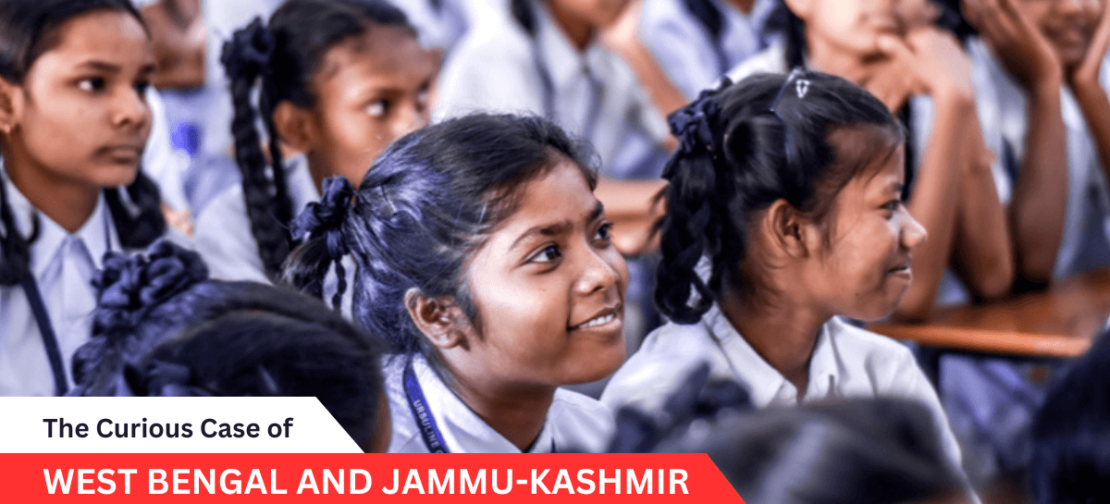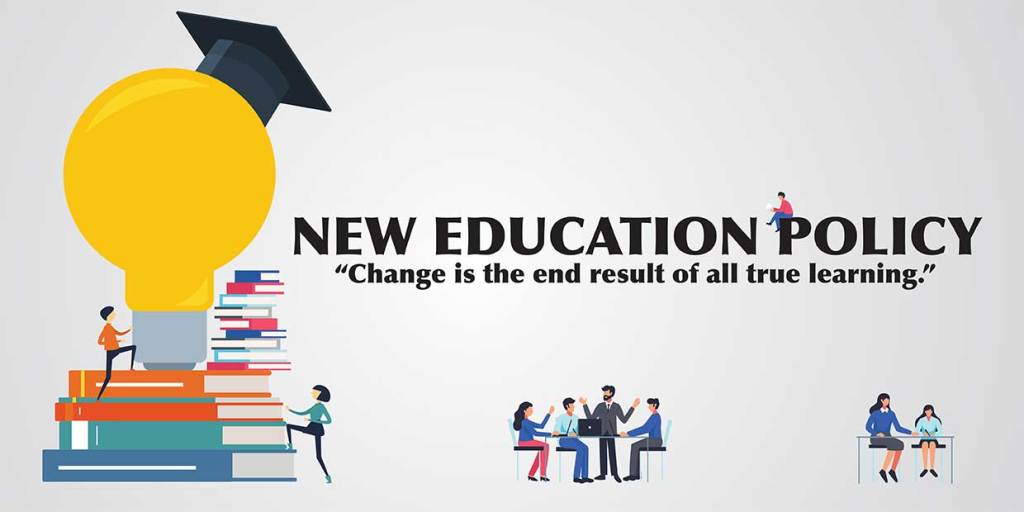
The National Education Policy (NEP) introduced in 2020 is a significant and forward-looking reform that has the potential to reshape the educational landscape of the country. It emphasizes flexibility in curriculum, promoting a multidisciplinary approach, integrating vocational education, fostering critical thinking and creativity among students, and internationalization of our educational landscape. However, for the NEP to impact the Education System of India, the active participation and collaboration of states are imperative.
In the federal structure of India, States play a pivotal role in implementing and customizing the policy to suit their unique socio-cultural and regional needs. They must align their educational infrastructure, curriculum, teacher training programs, and administrative mechanisms with the NEP’s principles to ensure successful execution. This article deals with the implementation of NEP in West Bengal and Jammu-Kashmir and suggests how the implementation has not just benefitted the states but works as a torch bearer for other States.
A recent parliament committee report on the Implementation of the National Education Policy 2020 in Higher Education suggests that the Department of Higher Education, Government of West Bengal, has made significant strides in internationalization efforts, with 21 universities and 52 colleges offering support to international students and signing over 46 Memoranda of Understanding with institutions from 46 countries.
Furthermore, they have introduced e-governance initiatives through portals like the Banglar Uchcha Siksha portal and online admission portal, enhancing accessibility for students. The Higher Education Institutions (HEIs) of the state have also embraced multidisciplinary education, implementing Choice Based Credit System (CBCS) and encouraging the design of new curricula by State-aided Universities, Private Universities, and Autonomous Colleges.
Additionally, initiatives to promote Indian Knowledge Systems, including Sanskrit education, have been launched, along with an Institute of Language Studies and Research. The state is also digitizing ancient manuscripts, and vocational education has been revamped with industry-specific courses and internships. Advanced laboratories and internship-embedded degree programs are promoted, with research and development activities given utmost importance. Scholarships, fellowships, and credit guarantees have benefited thousands of students. Notably, the state has demonstrated its commitment to expanding access to higher education by establishing two new State-aided Universities and four Government Colleges for Women, along with Three Universities in the Jungal Mahal area and one in the Darjeeling Hills area.
The impact of these initiatives on higher education in West Bengal is evident in the 16 universities and 325 colleges included in the NAAC accreditation list of 2022, as well as the impressive presence of 3 universities and 7 colleges in the Top 100 institutions in the NIRF ranking 2022. In addition, Stanford University’s study highlighting the top 2% of world-renowned scientists showcased West Bengal’s substantial representation among India’s scientific community, underlining the state’s significant contributions to global research.

Along similar lines, the Union Territory of Jammu and Kashmir, the Committee was informed, had proactively implemented the NEP 2020 in all Higher Education Institutions from the academic session of 2022 through its coordinated efforts among various stakeholders, including the Higher Education Department, Universities, and Colleges. The initiatives aligned with NEP 2020 included restructuring academic programs into four-year undergraduate programs, revamping curriculum, integrating National Skill Qualification Framework (NSQF) based skill courses, and expanding academic offerings in fields such as Agriculture Technology, Horticulture Technology, Veterinary Technology, AI & Machine Learning, Hospitality & Catering, Fine Arts, Music and Languages, Pharmacy and Paramedical. The region also emphasized lifelong learning opportunities and financial support for infrastructure development, with substantial funding from Rashtriya Uchchatar Shiksha Abhiyan (RUSA) and the Prime Minister’s Development Package (PMDP).
Moreover, the Higher Education Department actively engaged in faculty rationalization, MOUs with prestigious institutions were signed, and student support services were improved. Furthermore, Policy interventions such as the Jammu & Kashmir Public Universities Bill and the reconstitution of the J&K Higher Education Council (JKHEC) were also implemented, resulting in educational tours for women students, innovative learning approaches like the “Engineering Kitchen,” personalized interdisciplinary degree options, and training programs in Industry 4.0 technologies.
Finally, the successful implementation of various policies suggested by NEP in West Bengal and the Union Territory of Jammu and Kashmir is a fascinating achievement. It includes the internationalization of Universities, introduction of new technologies, more accessible funding of Universities, restructuring of undergraduate programmes, and opening up new multidisciplinary courses. However, states must allocate adequate resources and maintain a commitment to improving the quality and accessibility of education across urban and rural areas. Through their proactive involvement and initiatives, states can help translate the NEP’s vision into tangible improvements in the educational outcomes and opportunities available to students nationwide.
